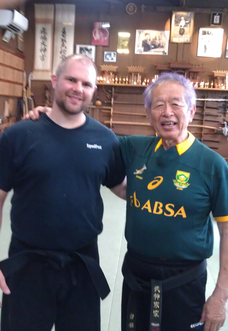This I never heardI'd be amazed if it was, other than through some contact Takamatsu may have had. Baguazhang is a relatively young art; it was created/taught by Dong Haichuan around the Beijing area in the late 1800s.
There are a couple of westerners in Japan who also train in Ba Gua and sometimes highlight similarities between that and taijutsu, but to my eyes these similarities are no different from that you’d see by looking across many other styles



